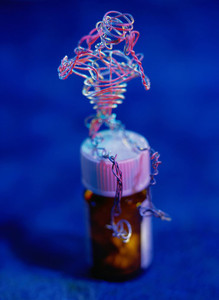In theory, an increase in the use of generics should help to reduce overall drug expenditures. However, growth in spending on medicines in the US increased by US$46.2 billion, or 12.2%, over 2014 levels, reaching US$425 billion in 2015 [1]. This increase comes despite a simultaneous growth in spending on generics, which increased by US$7.9 billion (7.4%) to US$114.1 billion in 2015.
One possible explanation for the increase in spending on medicines could be a lack of price competition between generics makers. This could be due to insufficient generics makers entering certain drug markets. Possible deterrents to entry could include expected competition with other generics makers. This so-called ‘competitive effect’ is an important, however, complex factor for policymakers to understand. Competitive effects are challenging to identify, especially when considering that since markets with many generics makers (and therefore more competition) are usually profitable for many different reasons.
Edward Kong, Research Assistant at the Yale University, Department of Economics, carried out a study into the factors that influence a generics maker’s decision to enter a specific market [2].
The decision of whether to enter the market for a particular drug is complex and strategic, and the factors that influence firms’ entry decisions are not fully understood. In the generics industry, larger markets have been documented to support more generics entrants. It has also been found that firms tend to enter markets for drugs that are similar to those for which they have previous experience. It has been estimated that experience in a drug market can reduce a firm’s cost of entering a similar market in the future by 7% on average. This supports the hypothesis that specialization allows firms to mitigate the risk of over entry (a phenomenon where multiple firms enter the same market and all make reduced profits).
In his approach, Mr Kong uses a static model of generics entry based on discrete-choice. His model assumes that firms only have incomplete information about their competitors and allows for firm heterogeneity. It includes market size as an important regressor and assumes that entry decisions are made simultaneously across firms in a one-shot game for each market. The competitive effect is estimated in a discrete game model, which allows the importance of competition to be established relative to other factors such as market size.
In the following article the results of his investigation into the factors affecting generics entry are discussed.
Conflict of interest
The author of the thesis [1] did not provide any conflict of interest statement.
Editor’s comment
Readers interested to learn more about competition and generics are invited to visit www.gabi-journal.net to view the following manuscript published in GaBI Journal:
Promoting a competitive generics market in the US
GaBI Journal is indexed in Embase, Scopus, Thomson Reuters’ ESCI, and more.
Readers interested in contributing a research or perspective paper to GaBI Journal – an independent, peer reviewed academic journal – please send us your submission here.
Related article
Factors affecting generics entry
References
1. GaBI Online - Generics and Biosimilars Initiative. Spending on medicines in the US increases again in 2015 [www.gabionline.net]. Mol, Belgium: Pro Pharma Communications International; [cited 2016 Oct 21]. Available from: www.gabionline.net/Reports/Spending-on-medicines-in-the-US-increases-again-in-2015
2. Kong E. Estimating competitive effects in firm entry with applications in the generic pharmaceutical industry. Yale University Department of Economics; 3 April 2016.
Permission granted to reproduce for personal and non-commercial use only. All other reproduction, copy or reprinting of all or part of any ‘Content’ found on this website is strictly prohibited without the prior consent of the publisher. Contact the publisher to obtain permission before redistributing.
Copyright – Unless otherwise stated all contents of this website are © 2016 Pro Pharma Communications International. All Rights Reserved.








 0
0











Post your comment